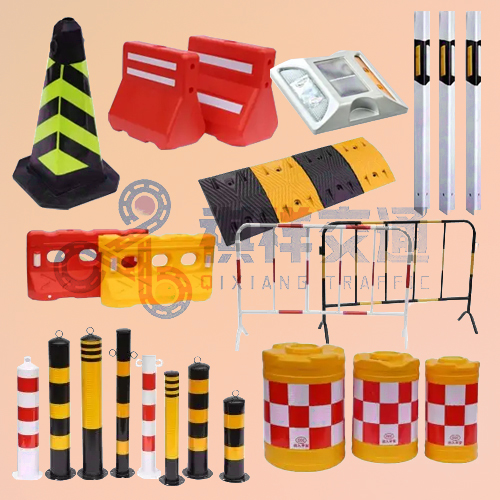When it comes to road safety, having the right equipment is crucial. Temporary road safety equipment plays an important role in keeping road users and workers safe during construction or repair projects. However, choosing the right equipment requires careful consideration of several factors to ensure efficiency and effectiveness. In this blog post, we’ll discuss the key factors you should consider when choosing temporary road safety equipment.
1. Comply with standards and regulations:
Before purchasing any road safety equipment, make sure it complies with relevant standards and regulations. Look for certifications such as American National Standards Institute (ANSI) standards or Federal Highway Administration (FHWA) approval to ensure the equipment meets required safety guidelines. Complying with these standards ensures that your product undergoes rigorous testing to ensure its effectiveness and reliability.
2. Equipment visibility:
One of the main purposes of road safety equipment is to improve visibility for drivers and workers. Choose equipment that stands out from its surroundings, whether it’s bright colors or reflective strips. High visibility vests, traffic cones, and delineators should be used to maximize visibility during the day and night. Investing in highly visible equipment can significantly reduce the risk of accidents and improve road safety.
3. Durability and lifespan:
Temporary road safety equipment should be able to withstand harsh weather conditions, daily wear and tear, and heavy traffic. Make sure the equipment you choose is made from durable materials that can withstand the impact of cars, trucks, or harsh weather. Look for products with weather-resistant properties, such as UV and corrosion resistance, to ensure their longevity. Remember, durable equipment not only ensures better safety but is also cost-effective in the long run.
4. Easy to install:
When it comes to temporary road safety equipment, efficiency is crucial. Choose equipment that is easy to install and remove as this will help reduce project downtime and minimize traffic disruptions. Products have user-friendly features such as quick-release mechanisms or simple assembly instructions that allow for faster deployment and disassembly, saving time and effort.
5. Versatility and Flexibility:
Consider the versatility and adaptability of the equipment you choose. Temporary road safety features should be adapted to different road configurations and project requirements. For example, a barricade that can be interconnected to create a continuous safety barrier is more versatile than one with limited connection options. Choosing multifunctional equipment ensures you can adapt to changing needs while minimizing additional costs.
In conclusion
Choosing the right temporary road safety equipment is a key aspect of ensuring the safety of road users and workers. By considering standards compliance, visibility, durability, ease of installation, and versatility, you can make an informed decision about the equipment that’s best for your project or organization. Prioritizing these factors not only improves safety but also increases the confidence of the workforce and road users, resulting in a safe road environment.
Post time: Nov-10-2023







